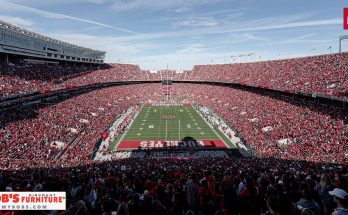The college football offseason is always a whirlwind of activity, with coaching changes, recruiting battles, transfer portal moves, and program upgrades shaping the landscape for the upcoming season. As the calendar flips closer to kickoff, fans and analysts alike ask the perennial question: who won the offseason? This year, evaluating every Power 4 team—the powerhouse conferences of the SEC, Big Ten, ACC, and Big 12—reveals a fascinating mix of surprises, steady progress, and setbacks across the landscape of college football. Each program’s offseason performance could very well set the stage for how the 2025 season unfolds. So, who truly came out on top? Let’s take a deep dive and evaluate each team in these conferences based on coaching moves, recruiting success, transfer portal acquisitions, and overall momentum.
Starting with the Southeastern Conference, the perennial juggernaut of college football, Alabama continues to reinforce its dominance. Nick Saban’s team once again topped recruiting rankings, landing several five-star prospects who address key positional needs. Their transfer portal activity was judicious, focusing on quality over quantity, adding experienced depth at linebacker and wide receiver. Furthermore, Alabama’s coaching staff saw minimal turnover, providing stability that many other programs can only envy. While some questioned whether the Tide’s reign might wane with the departures of star players to the NFL, their offseason moves suggest that the program remains as formidable as ever. Recruiting dominance combined with a strong coaching infrastructure means Alabama is undoubtedly among the biggest offseason winners.
Georgia, the defending national champions, also had a robust offseason. They maintained their top-tier recruiting class and made significant upgrades via the portal, especially along the defensive front. The Bulldogs added a new co-defensive coordinator, signaling a tactical evolution that could make their defense even more intimidating. Georgia also retained its coaching core, which is critical for maintaining continuity after a championship run. There were concerns about quarterback development, but the offseason saw promising young talent added to that group. While Georgia didn’t overhaul its roster, their fine-tuning approach may pay dividends by keeping the program on the cutting edge.
Florida State made notable strides during the offseason, reasserting themselves as a force within the ACC and beyond. The Seminoles’ recruiting haul was among the best in the nation, featuring several impact players who fill key needs in the trenches and secondary. Florida State also made an intriguing splash in the transfer portal, adding experienced players who should contribute immediately. Their coaching staff remains stable, with second-year head coach making waves by blending an aggressive recruiting strategy with a culture reset. The momentum behind the Seminoles is palpable, and their offseason efforts may finally translate into a return to national prominence.
In the ACC, Clemson’s offseason was marked by transition and recalibration. The Tigers lost a few key veterans to the draft, but their recruiting class still ranks highly, loaded with athleticism and skill. However, their transfer portal activity was more subdued compared to past years, which may limit their ability to plug immediate holes. Coaching-wise, Clemson experienced some assistant coaching changes, which could impact position group development. While not a disaster by any means, Clemson’s offseason feels more like maintenance rather than an aggressive leap forward, leaving some questions about whether they can recapture their former dominance.
Miami, another ACC contender, had an offseason mixed with highs and lows. Their recruiting class was solid but not spectacular, lacking the blue-chip stars that tend to grab headlines. However, Miami made savvy portal moves, acquiring transfers at quarterback and defensive back that address glaring needs from last season. Their coaching staff underwent a minor shakeup, with a new offensive coordinator aiming to bring a more dynamic attack. While Miami may not have “won” the offseason outright, their smart, targeted upgrades could keep them competitive in a tough conference.
Turning to the Big Ten, Ohio State continues to assert itself as a national powerhouse with an aggressive offseason strategy. The Buckeyes landed one of the nation’s best recruiting classes and were particularly active in the portal, adding key offensive skill position players and depth on the defensive line. Urban Meyer’s legacy of talent evaluation seems alive and well, even under the current regime. Coaching remained stable, allowing the Buckeyes to build continuity and refine their schemes. Ohio State’s offseason moves suggest that the program is still a juggernaut capable of competing for national titles year after year.
Michigan’s offseason was also strong, with Jim Harbaugh’s program showing steady progress. Their recruiting class is well-balanced, featuring players who fit the system and address gaps in the offensive line and secondary. Michigan was less active in the portal compared to some rivals but made a few strategic additions that bolster their roster depth. Coaching remained consistent, and the program’s culture appears steady. While Michigan may not have pulled off headline-grabbing moves, their methodical offseason work positions them well for a deep run in the Big Ten and beyond.
Penn State’s offseason reflected a desire to regain national relevance after some recent disappointments. Their recruiting class is solid but falls short of elite status, and the Nittany Lions were aggressive in the portal, adding transfers that can immediately impact the offensive and defensive lines. The coaching staff saw some tweaks, with a new offensive coordinator hired to bring more creativity and firepower to the offense. Penn State’s offseason effort suggests a program in transition but one aiming to climb back toward the top of the conference.
In the Big 12, Oklahoma faced an offseason that was a mix of rebuilding and recalibration. The Sooners landed a good recruiting class but lost some top talent to the transfer portal and NFL draft. Their portal activity was high, but many of the incoming transfers are unproven at this level. Coaching changes created some uncertainty, with a new head coach stepping in and bringing fresh energy but also questions about continuity. Oklahoma’s offseason was a reset more than a breakthrough, making it unclear if they will contend immediately.
Texas, meanwhile, showed flashes of promise with their recruiting haul and portal moves, particularly on offense. The Longhorns added some speed and skill players who could transform their attack. Coaching changes were minimal, and the program is embracing a patient rebuild with a focus on developing young talent. Texas’s offseason is one of cautious optimism—if their young players develop, they could be a dark horse in the Big 12.
Kansas State quietly had a strong offseason, landing a solid recruiting class and making targeted transfer portal acquisitions. Their coaching staff remained intact, and the Wildcats’ culture of toughness and discipline remains strong. Kansas State is not a flashy program, but their consistent offseason approach could allow them to compete at a high level in the Big 12 again.
West Virginia struggled a bit more during the offseason, losing some talent to transfers and failing to land a top-tier recruiting class. Their portal activity was average but didn’t bring in many game-changers. Coaching changes added some instability, making the Mountaineers’ offseason one to watch with cautious concern.
In sum, the offseason winners tend to be the programs that balanced recruiting, transfer portal savvy, coaching stability, and cultural momentum. Alabama and Georgia remain the giants atop the SEC, continuing their pipelines of elite talent and strong leadership. Florida State is emerging as a serious challenger with its aggressive recruiting and portal additions. In the ACC, Florida State and Miami made strides, while Clemson seems to be in a holding pattern. The Big Ten’s Ohio State and Michigan keep their positions as powerhouses, with Penn State showing signs of resurgence. The Big 12 is more wide open, with Oklahoma and Texas navigating transitions, while Kansas State’s quiet consistency could pay off.
Ultimately, winning the offseason means laying the groundwork for sustained success. While many teams made solid moves, the ones who truly “won” are those who combined recruiting excellence with smart portal pickups and coaching stability. As the fall approaches, it will be fascinating to see which of these programs turn their offseason work into on-field dominance. For now, Alabama and Georgia lead the way, but college football’s unpredictable nature means that the door is open for surprises from Florida State, Ohio State, and others hungry to claim their place at the top. The offseason battles are over—now it’s game time.


